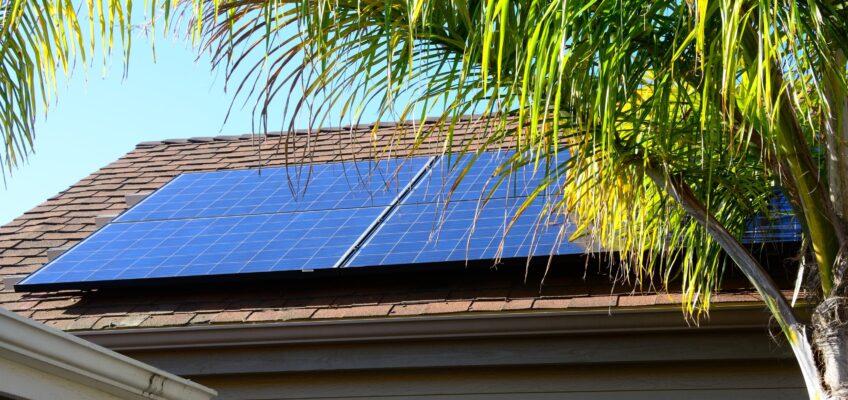In a proposed decision earlier this week, California’s Public Utilities Commission will dramatically reduce the viability of rooftop solar in the state that launched the U.S. solar market. You could spend hours trying to digest the 200-page decision, but the truth of how we got here isn’t in it. Rather, the decision is a culmination of years of work by the incumbent, monopoly electric utilities to hoodwink a critical mass of stakeholders that solar should be the target for the many ills of the state’s electricity markets, rather than the morally and financially bankrupt utilities.
Before my critique of the decision making process, this recent tweet thread explains how we got here:
The CPUC docket narrows an existential fight over who profits from our $360 billion per year electricity business to a bean counting exercise about solar customers. Are low-income folks paying too much for electricity? Yes, but state-approved electricity market rules have been allowing utilities to overly burden low-income customers since long before solar panels hit California rooftops. When we fail to treat electricity as a basic right, we allow utilities to heavily burden millions of households with unreasonably high bills, especially people of color and low-income families. The cause is just, the culprit is not solar.
Do we need to pay basic costs to maintain the electricity grid? Of course! Does rooftop solar expansion provide a key inflection point for this discussion? Absolutely! Is the solution to increase the cost of providing zero-pollution to the electricity system on people willing to spend thousands of dollars of their own money to do so? No! It wasn’t solar customers that diverted millions of dollars from basic maintenance to shareholder dividends, exposing Californians to greater wildfire risk. It’s not solar customers wanting to build new gas power plants likely to strand billions of ratepayers dollars. Again, the cause is just, the culprit is not solar.
Ironically, the California Public Utilities Commission already has a proceeding open that dispenses with the utility-interest approach to integrating distributed solar in favor of a broader, systemic look: the High Distributed Energy Resources proceeding. In it, the Commission proposes a three-track approach to unlock system data for effective planning, remove conflicts of interest in distribution grid management, and leverage smart technology for a more resilient grid.
As demonstrated by the atrocious proposed decision in the solar docket, the second track –– focused on prying the utility’s hands off the distribution system –– is the most important. Imagine an alternate universe with a package shipping company, Pacific Packaging, that was allowed monopoly ownership of the roads. Pacific Packaging could go to its regulators and ask them to assess tolls on its competitors (UPS, FedEx, USPS), because by reducing competition it would reduce wear and tear on the roads, saving low-income customers money on maintenance (no mention of the costs of monopoly lock-in on package delivery…). Sound backward? It’s similarly ridiculous in the electricity sector, only it’s real.
With shareholder profits at stake, we can’t be surprised by utility executives. They behave very rationally (if not ethically) in trying to stave off competition, even if it means perverting the regulatory process in their favor. California’s elected and regulatory leaders ought to be better prepared to sift through the bullshit. After all, PG&E sent a letter to lawmakers in 1995 calling net energy metering a “bold scam.” They witnessed PG&E spend $46 million in 2010 on a ballot initiative to kill community choice energy. And they’ve suffered through record wildfires in recent years due to PG&E executives choosing to boost shareholder dividends instead of performing essential maintenance. This premise of this proceeding was taking the arguments against net metering in good faith, despite abundant evidence that was not the case.
If we allow ourselves to see past the utility protectionist propaganda, the opportunity presented by the rooftop solar market is enormous. According to a recent study by Vibrant Clean Energy, Americans will save a half a trillion dollars if our pursuit of clean energy prioritizes and optimizes the use of local energy resources like rooftop solar. An earlier study focused on Minnesota(!) found that incorporating 13 gigawatts of local solar (in a state with one-tenth the population of California) created more jobs and provided similar savings to a utility-dominated large-scale approach to clean energy.
The growth of distributed solar has changed the electricity system and called attention to the inequities in our electricity markets. But it’s not the culprit, it’s the opportunity.
P.S. There’s also a fascinating and concerning twist of process with this proposed decision. As is traditional, the decision was written by two Public Utilities Commission commissioners (out of sight of the remaining three) that are leaving the commission before it’s finalized. So, none of the regulators responsible for the measure will be on hand to defend it against the well-deserved criticism.
This article was originally posted at ilsr.org. For timely updates, follow John Farrell on Twitter or get the Energy Democracy weekly update.






